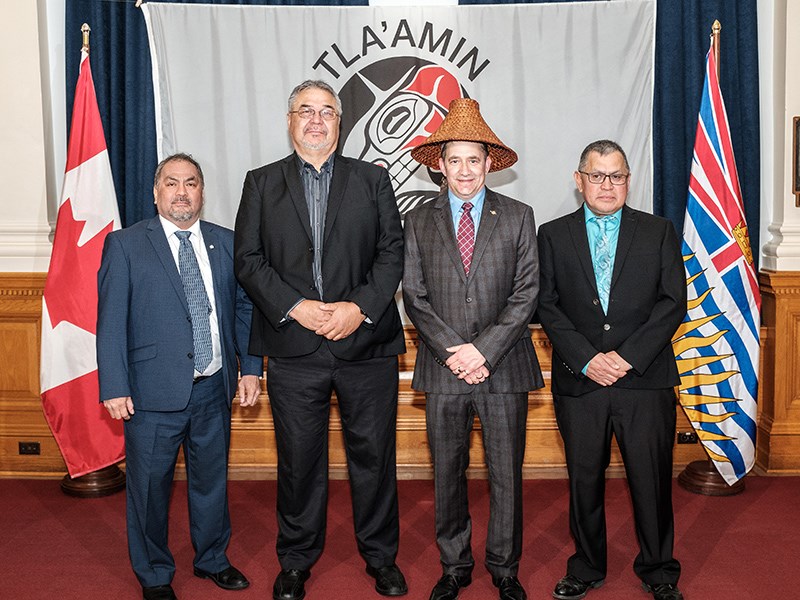Tla’amin Nation marked its third anniversary of the signing of its treaty with a flag ceremony at the BC Parliament buildings today.
On April 5, 2016, Tla’amin became a self-governing nation. The flag ceremony took place on Friday, April 5 at the legislature.
“Our treaty is about building a future for our children so that they can look forward to lives full of opportunity and choice,” said Tla’amin hegus Clint Williams. “This is the bedrock of self-determination, to have control of our lands, our rights and our economy, and I am proud of the Tla’amin people for their dedication to change things for the better, not only in the three years since we became free of the Indian Act, but for all the years that led up to that great day.”
The flag display is a demonstration of a shared commitment to reconciliation and a reminder of the government-to-government relationship between BC and treaty nations.
“The Tla’amin treaty effective date in 2016 was the culmination of decades of hard work by the Tla’amin Nation,” said provincial minister of indigenous relations and reconciliation Scott Fraser. “The impact of that great work will continue to echo through the generations, creating a strong path to self-determination for the Tla’amin people, rich with opportunity for their community to continue flourishing.”
Since the treaty came into effect, Tla’amin Nation has grown and diversified its economy through enhanced forestry operations, new real estate development and culturally enriched tourism operations, including the redevelopment of the Historic Lund Hotel. The nation has also renewed efforts to revitalize and maintain the Tla’amin language through joint initiatives with School District 47.
“It was an incredible honour to celebrate with hegus Clint Williams and the Tla’amin people on their traditional territory the coming-into-force of the Tla’amin Treaty three years ago,” said federal minister of crown-indigenous relations Carolyn Bennett. “It was the culmination of many years of hard work by the Tla’amin Nation, the Province of British Columbia and the Government of Canada to reconcile and build a new partnership that has enabled the Tla’amin people to chart their own path free of the Indian Act. I want to congratulate the Tla’amin people on this anniversary and wish them continued success as they move forward on the path to self-determination.”
The Tla’amin treaty was the fourth modern treaty to come into effect in BC, leading Tla’amin Nation into a future of self-determination and self-government.
The treaty negotiation process provides a framework for three parties, Canada, BC and first nations, to work toward the common goal of reconciliation and to build a new relationship through treaties. Some major components integral to modern treaty-making include indigenous rights, self-government, land and resources, financial agreements, fishing and forestry.



